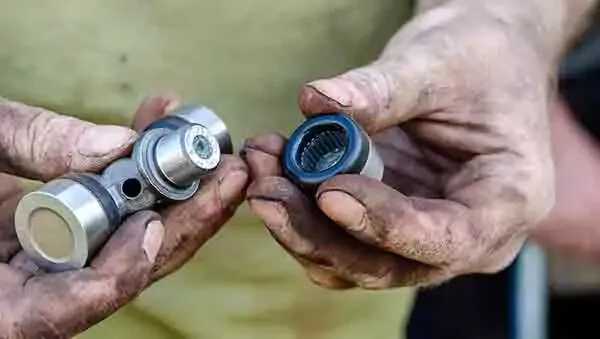If you just bought your first truck, SUV, or 4WD, there’s something new for you to maintain: your transfer case. The transfer case is mounted behind your transmission and transfers power to the wheels. If you have low range and high range, those gears are in the transfer case.
When it comes time to change it, go to the eBay Parts Finder - opens in new window or tab.. Enter your year, make, model, engine, and trim to get transfer case fluid that’s compatible with your vehicle.
While vintage trucks might use gear oil in the transfer case, modern vehicles take a specific formulation for transfer case fluid. You can buy synthetic or not, just like engine oil. Regardless, keep that fluid fresh because the gears and chains in your transfer case need proper lubrication.
How Long Does Transfer Case Fluid Last?

We recommend changing transfer case fluid every 30,000 to 60,000 miles.
Manufacturers set different limits for when to change transfer case fluid. We recommend between 30,000 to 60,000 miles, depending on your vehicle and the driving conditions. If you tow heavy loads, drive in extremes, or spend a lot of time off-road, change it more frequently.
Check your owner’s manual for fluid change intervals for your vehicle. You might want to change your transfer case fluid at the same time as your transmission fluid and differential fluid. These are easy jobs to tack on.
How to Tell if Transfer Case Fluid Needs Changing

Old transfer case fluid could make it more difficult to get into 4WD.
Even if there are no signs of contamination, follow the recommended maintenance schedule set by the manufacturer. However, if you notice these symptoms, it’s time for change.
Burning smell: When the transfer case fluid gets contaminated, it starts to break down, which can lead to overheating. Pay attention to a burning smell.
Strange noises: If unusual whining or grinding is coming from the transfer case, you may need to change the fluid. Pay close attention while engaging or disengaging 4WD.
New vibrations: If you notice new vibrations while driving in AWD or 4WD, it could be due to contaminated fluid. Bad fluid can’t lubricate the internal components.
Trouble getting into 4WD: If you have difficulty engaging the AWD system or getting from 2WD to 4WD, the fluid is no longer supplying sufficient lubrication.
It’s also critical to check for leaking fluid at the transfer case. Low transfer case fluid levels can produce many of the above symptoms.
How long can you drive with dirty transfer case fluid?
Change dirty fluid as soon as possible. When fluid loses its ability to lubricate the gears, it leads to increased friction and overheating. Before long, your bearings and chains could be damaged, leading to a bigger repair bill.
Replacing Transfer Case Fluid

Consult your owner’s manual for how many quarts are needed.
In most cases, this beginner-level DIY job takes less than 30 minutes. It’s similar to an oil change.
Even the associated jobs of changing your differential and transmission fluids are beginner-level. It saves time if your vehicle has easy-to-access drain plugs.
How much does it cost to replace your transfer case fluid?
Expect to spend between $10 and $40 for each quart of transfer case fluid. Consult your owner’s manual for how many quarts are needed for your vehicle. Other parts aren’t needed—unlike an oil change that requires a new filter.
To complete the job, you’ll need basic tools, such as a drain pan, wrenches, and wheel chocks.
Having a professional change the transfer case fluid adds another $75 to $150, plus the markup on the fluid. Remember, this is an easy DIY job.
What else should be replaced with the transfer case fluid?
While replacing the transfer case fluid, inspect the entire system. Look at all the seals and gaskets around the transfer case. These are prone to leakage. If they are leaking, now is the time to replace them.
Also, inspect the U-joints or CV joints for wear. They endure a lot of stress while transferring power to the axles. Finally, confirm that the drain and filler plugs provide a tight seal. If not, replace them.
Share your feedback
This article is meant to provide general guidance only. Automotive maintenance, repair, upgrade, and installation may depend on vehicle-specifics such as make and model. Always consult your owner's manual, repair guide for specific information for your particular vehicle and consider a licensed auto-care professional's help as well, particularly for advance repairs.
































